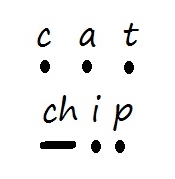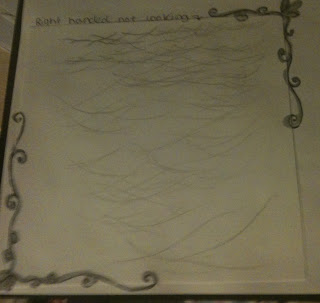Learning to Read...

In our English seminar we learnt about how we teach children to read using phonetics schemes such as 'letters and sounds' and 'jolly phonics'. There is an awful lot about phonics that i don't know and it seems to have changed since I was at school - a statement that makes me sound so old! We began with looking at definitions of words which are related/used in these schemes, some of these are: Grapheme - which is how the sound is recorded [written down] Phoneme - the smallest unit of sound in a word [the sound which a letter makes] GPC - Grapheme Phoneme Correspondence Segmenting - splitting up a word into its sounds or phonemes Blending - putting the sounds or phonemes back together Digraphs - a two letter sound Trigraphs - a three letter sound Sound button - a dot or line you place under the sound/phoneme to split up the sounds, then when you press the button the children say the sounds getting faster until they blend the phonemes ...







